5 Moves That Keep Your Muscles Strong After 50, According to a Trainer
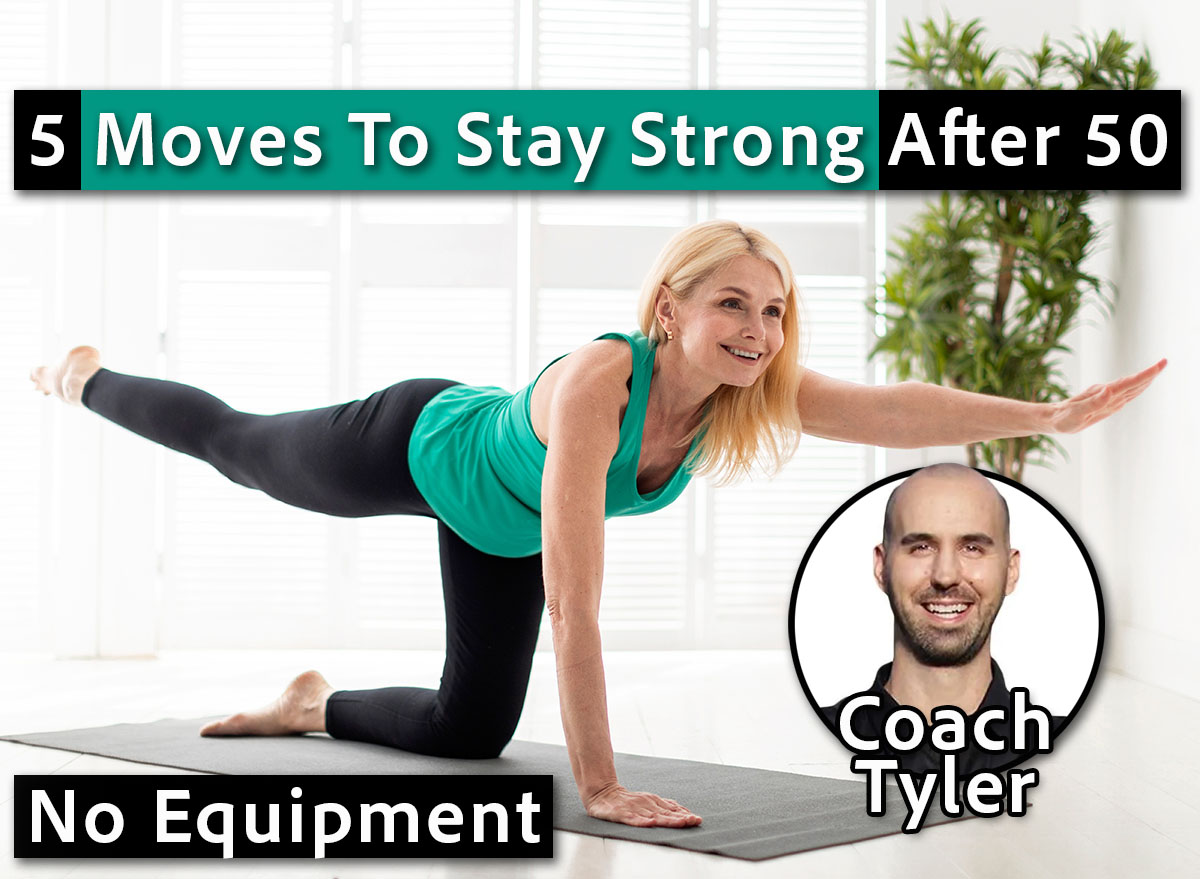
Staying strong after 50 doesn’t mean you need to crush heavy weights or chase brutal workouts. The real secret lies in consistent, intentional movement that reinforces strength where your body needs it most: hips, core, back, and shoulders. These are the muscle groups that allow you to move with power, maintain balance, and handle everyday life with ease.
This five-move routine builds foundational strength without overloading your joints. It targets major muscle groups while activating stabilizers that tend to weaken with age. You’ll reinforce proper movement patterns, improve posture, and build muscular resilience that pays off in and out of the gym.
Each move hits a key strength zone: lower body, upper body, core, mobility, and stability. Do this routine two to three times a week, and you’ll feel the difference in how you walk, bend, lift, and recover. No fancy gear. No fluff. Just results that matter.
Split Stance Chair Squat
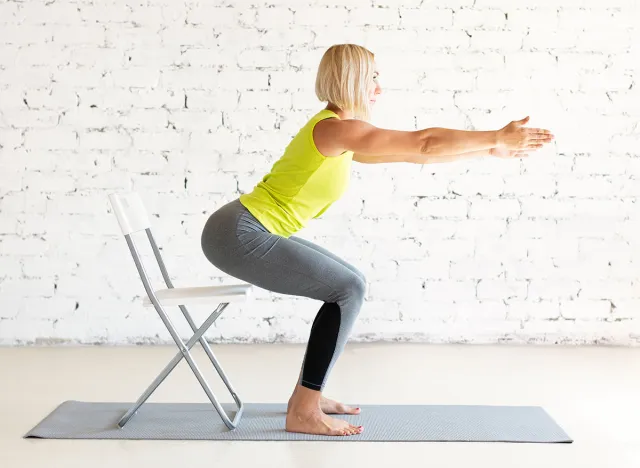
Split stance chair squats strengthen your quads, glutes, and hips while improving balance and alignment, two things that start to slip as we age. The split stance shifts focus to single-leg stability, making it more functional than a standard squat. Plus, using a chair for depth keeps the movement controlled and safe for your knees.
How to do it:
- Stand with your back to a chair and one foot a step behind the other in a split stance.
- Lower your back knee toward the floor and tap your glutes gently on the chair.
- Push through your front heel to stand tall, keeping your core tight.
- Do 8–10 reps per leg.
Wall Push-Up to Reach
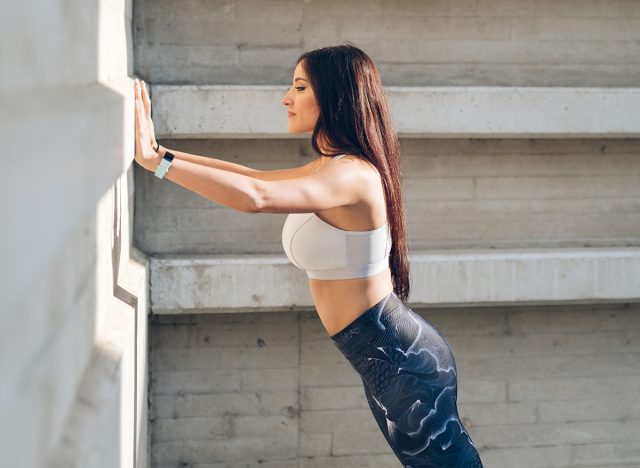
Push-ups often get skipped after 50, but wall variations bring all the benefits without the strain. This version builds chest, shoulder, and triceps strength while reinforcing core engagement. Adding the reach challenges your balance and shoulder mobility, vital for maintaining functional strength.
How to do it:
- Stand facing a wall with your hands at chest height, just wider than shoulder-width.
- Perform a push-up toward the wall, keeping your body in a straight line.
- As you press back, lift one hand off the wall and reach forward or slightly overhead.
- Alternate sides for 10–12 controlled reps.
Bird Dog Hold
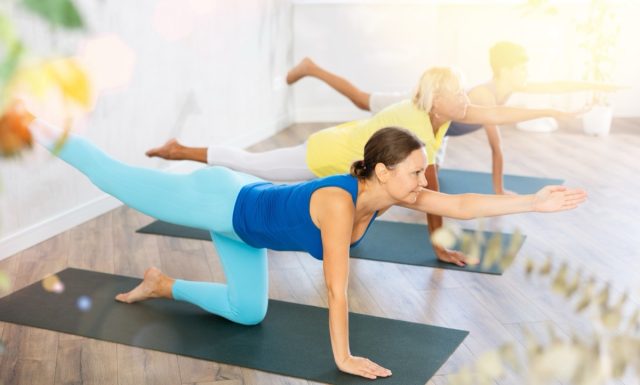
The bird dog builds deep core strength and spinal stability without crunches or planks. It also sharpens your balance and strengthens the muscles around your spine and shoulders. Holding each rep for a few seconds forces you to control the movement, not just power through it.
How to do it:
- Start on hands and knees with your spine neutral.
- Extend your right arm and left leg until they’re in line with your torso.
- Hold for 3–5 seconds, keeping hips level and core tight.
- Return to the start and switch sides. Do 6–8 holds per side.
Standing Resistance Band Row
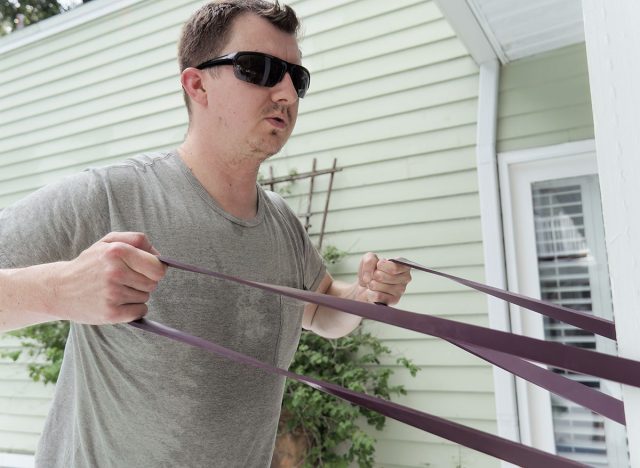
Maintaining strong upper back muscles prevents the rounded posture that sneaks in with age. This row variation trains those muscles in a standing position, which also challenges your core and balance. You only need a light resistance band and a sturdy anchor point.
How to do it:
- Attach a resistance band to a door or pole at chest height.
- Stand tall, holding a handle in each hand with arms extended.
- Pull the handles toward your ribcage, squeezing your shoulder blades together.
- Slowly return and repeat for 10–12 reps.
Heel-to-Toe Walk with Overhead Reach
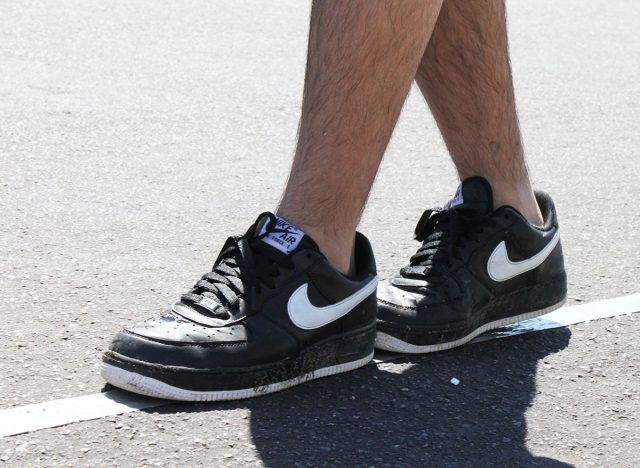
A heel-to-toe walk with an overhead reach looks simple, but it fires up everything: your legs, core, shoulders, and especially your balance. The heel-to-toe walk trains your body to stay stable under shifting loads, while the overhead reach challenges shoulder mobility and coordination. It’s the kind of movement that translates directly to real-life strength.
How to do it:
- Stand tall with your arms overhead and core braced.
- Walk forward in a straight line, placing the heel of one foot directly in front of the toes of the other.
- Keep your arms up the entire time to engage your core and shoulders.
- Walk 10–15 steps forward, then reverse.
Stay Consistent, Stay Strong
Strength after 50 comes down to intention, consistency, and smart programming, not punishing intensity. This routine builds the kind of strength that protects your joints, boosts energy, and keeps you doing what you love for decades to come. Stick with it, and your body will thank you every day.